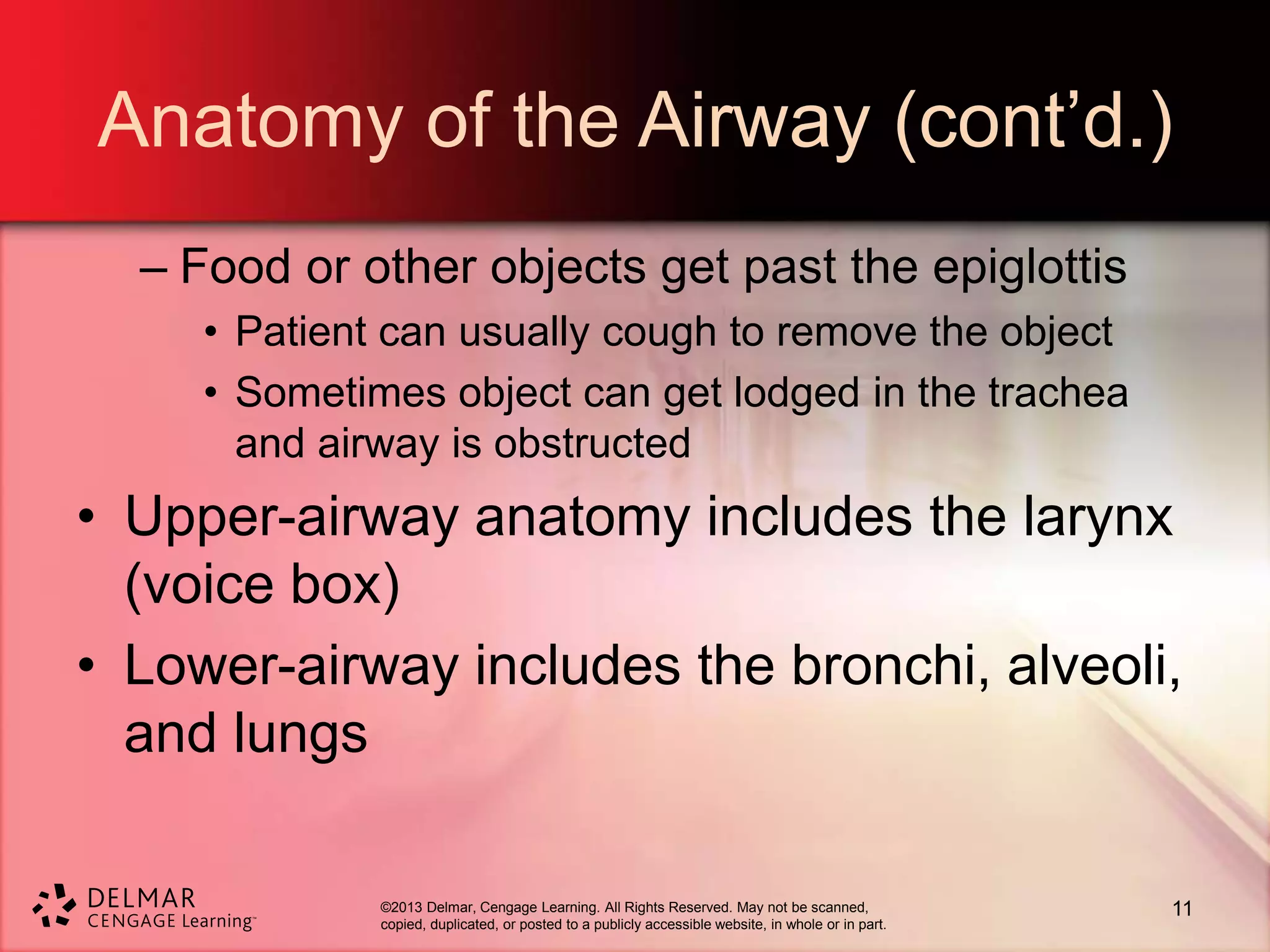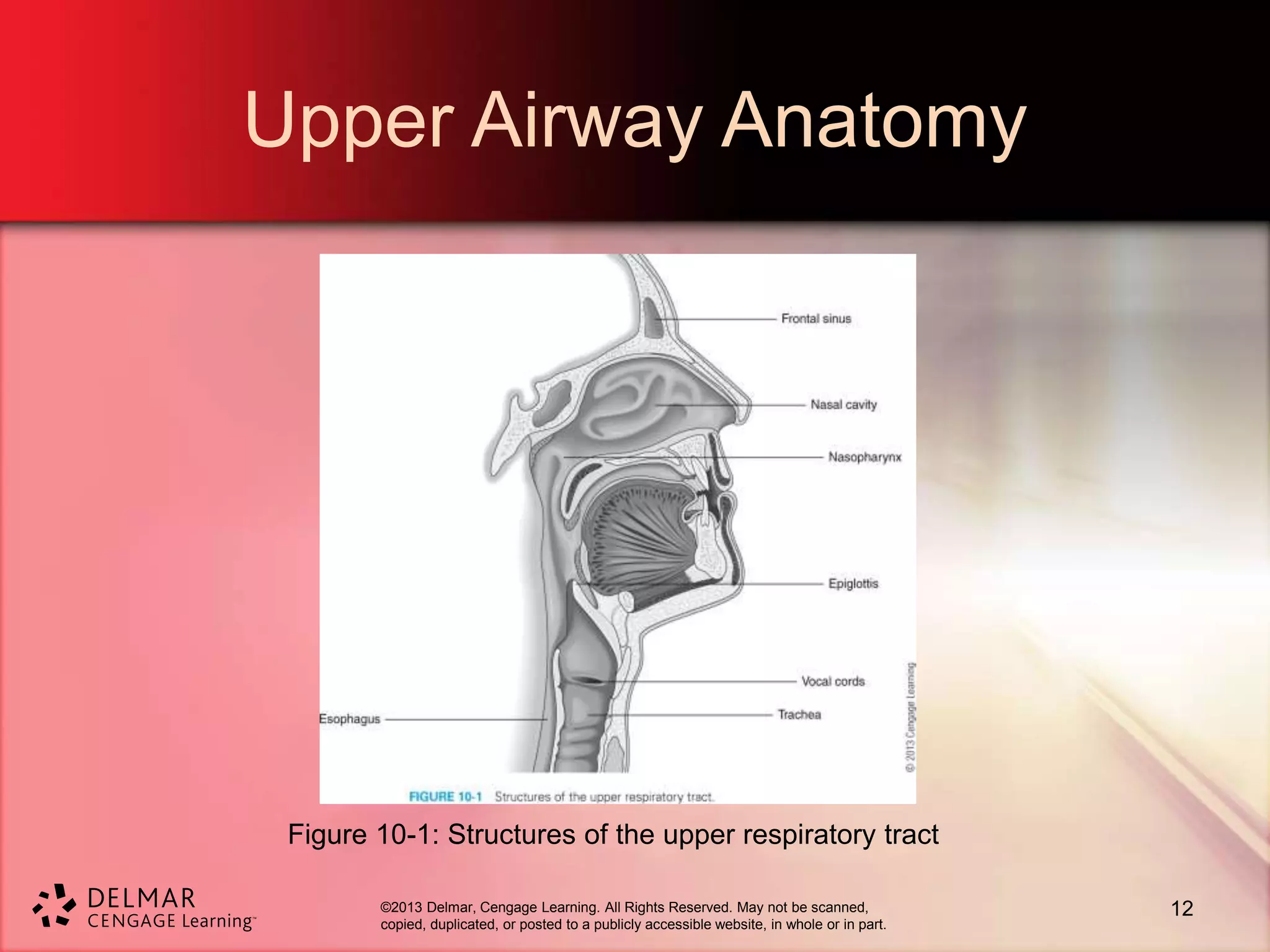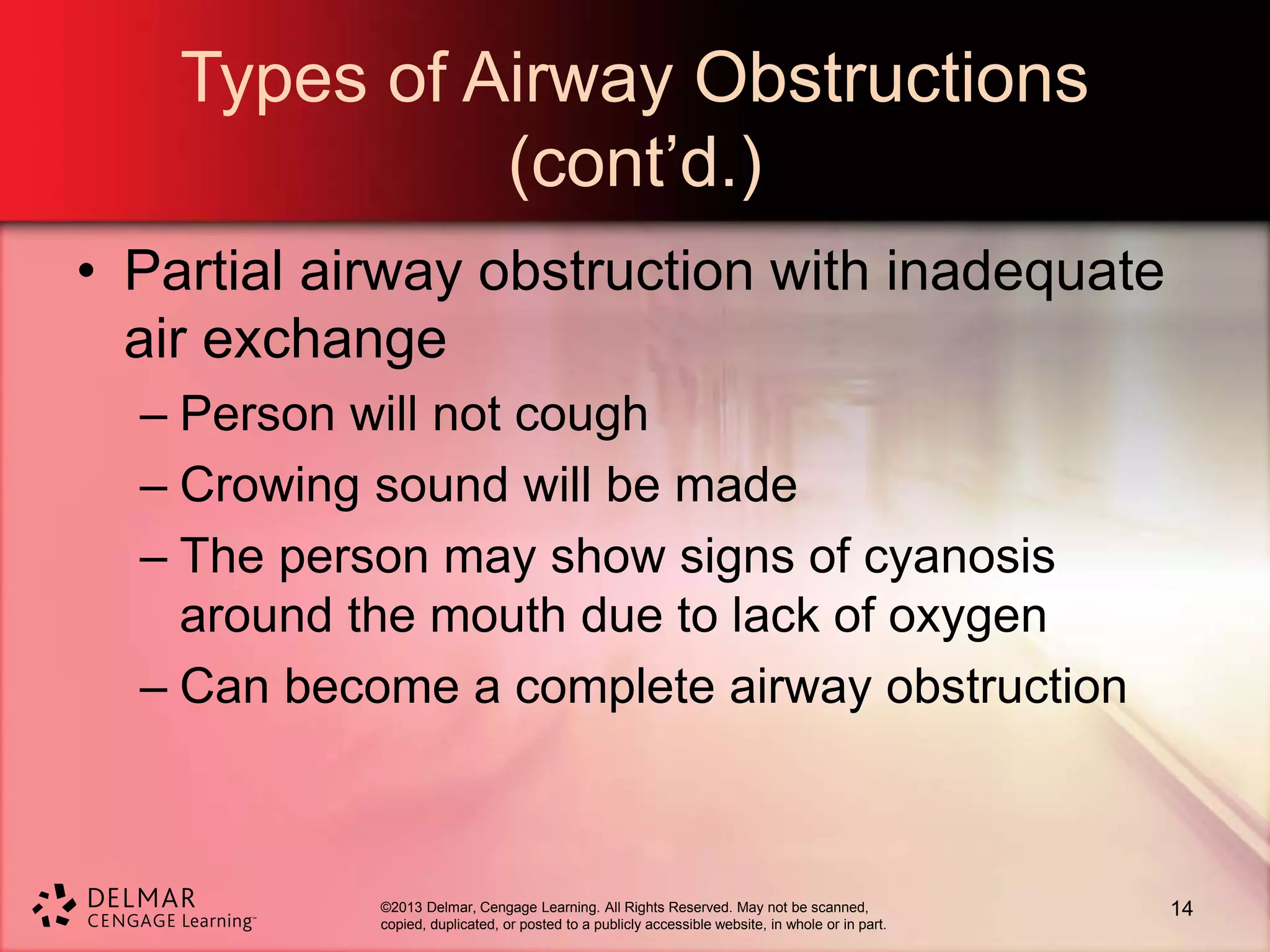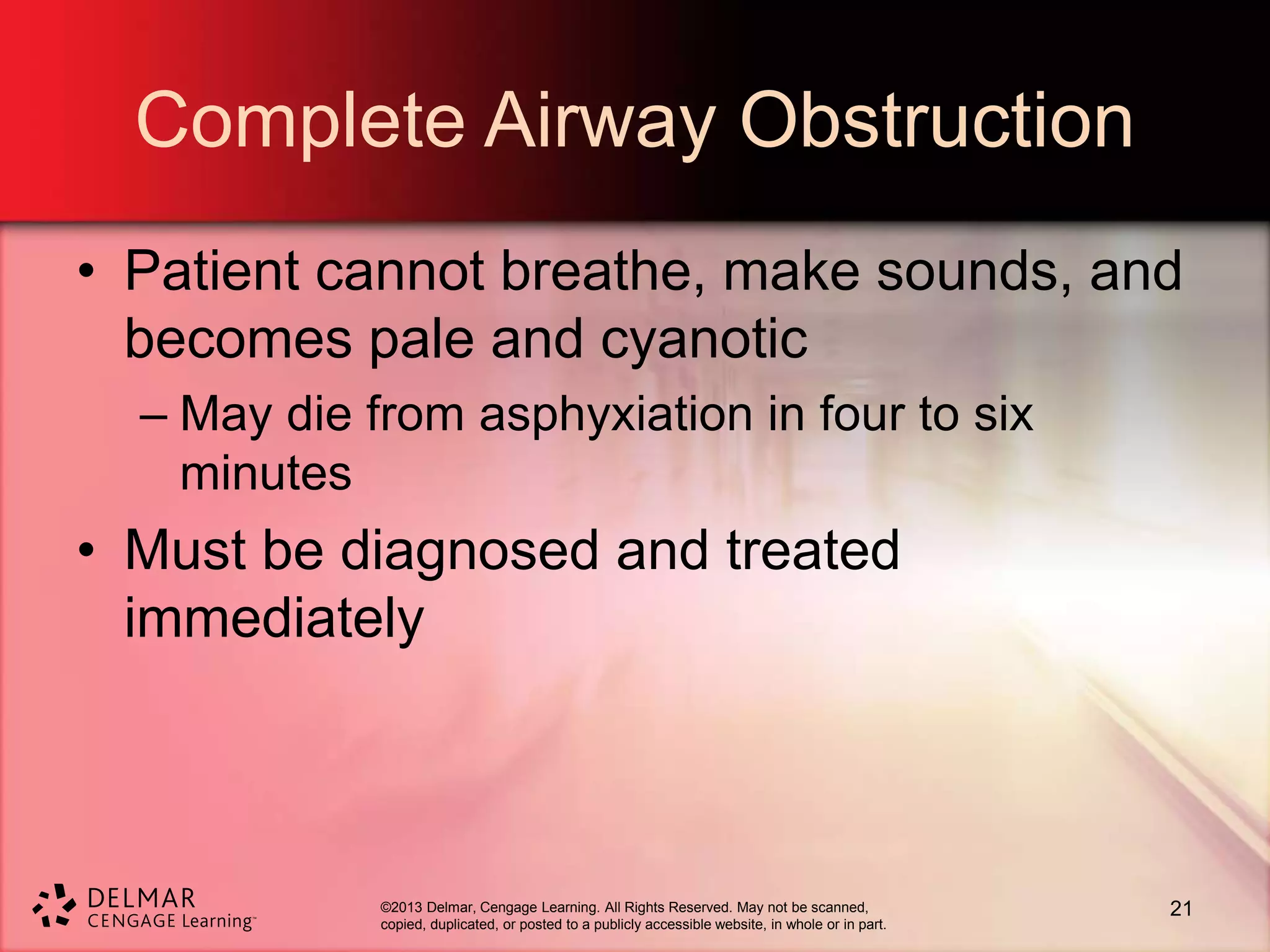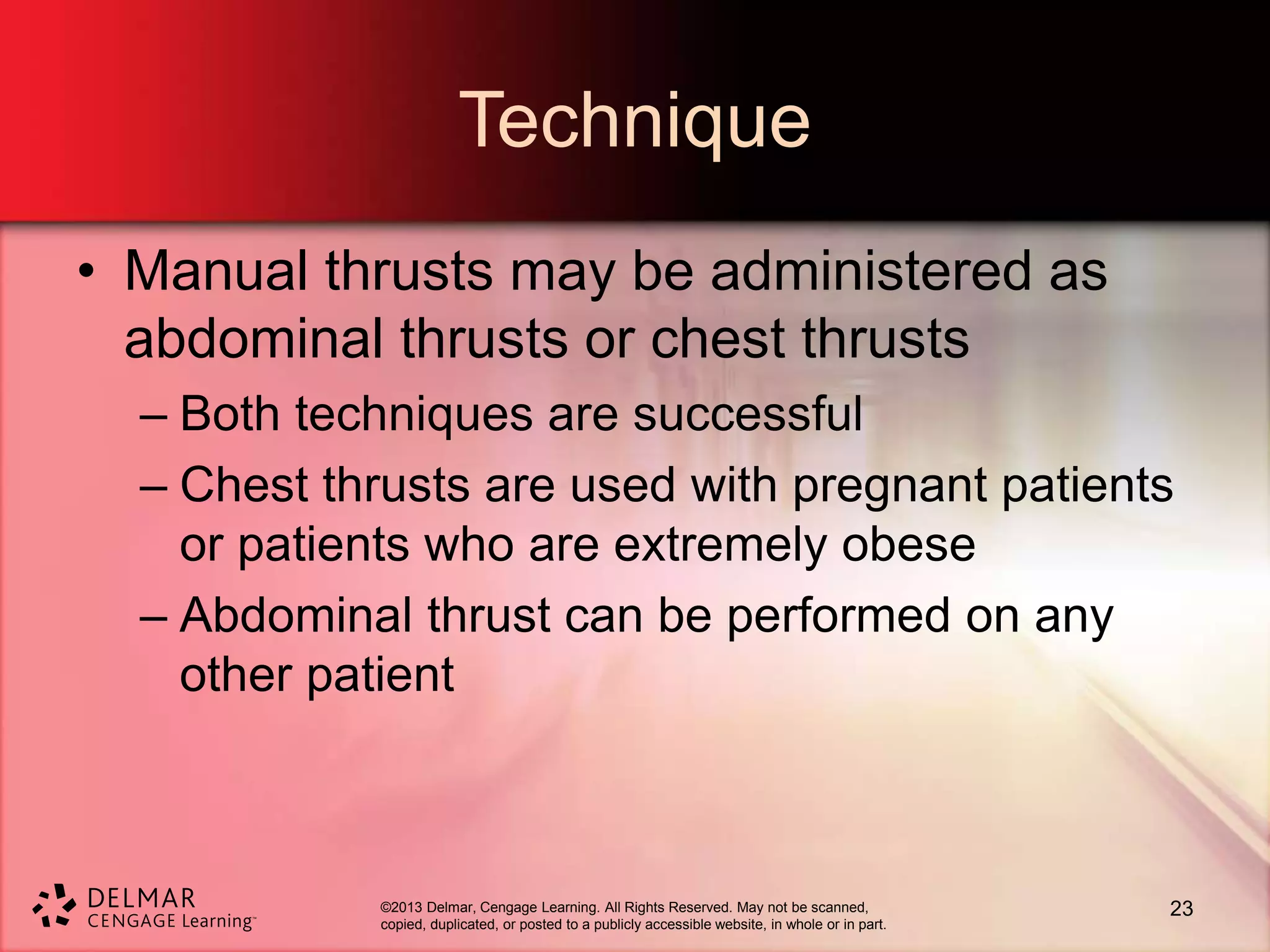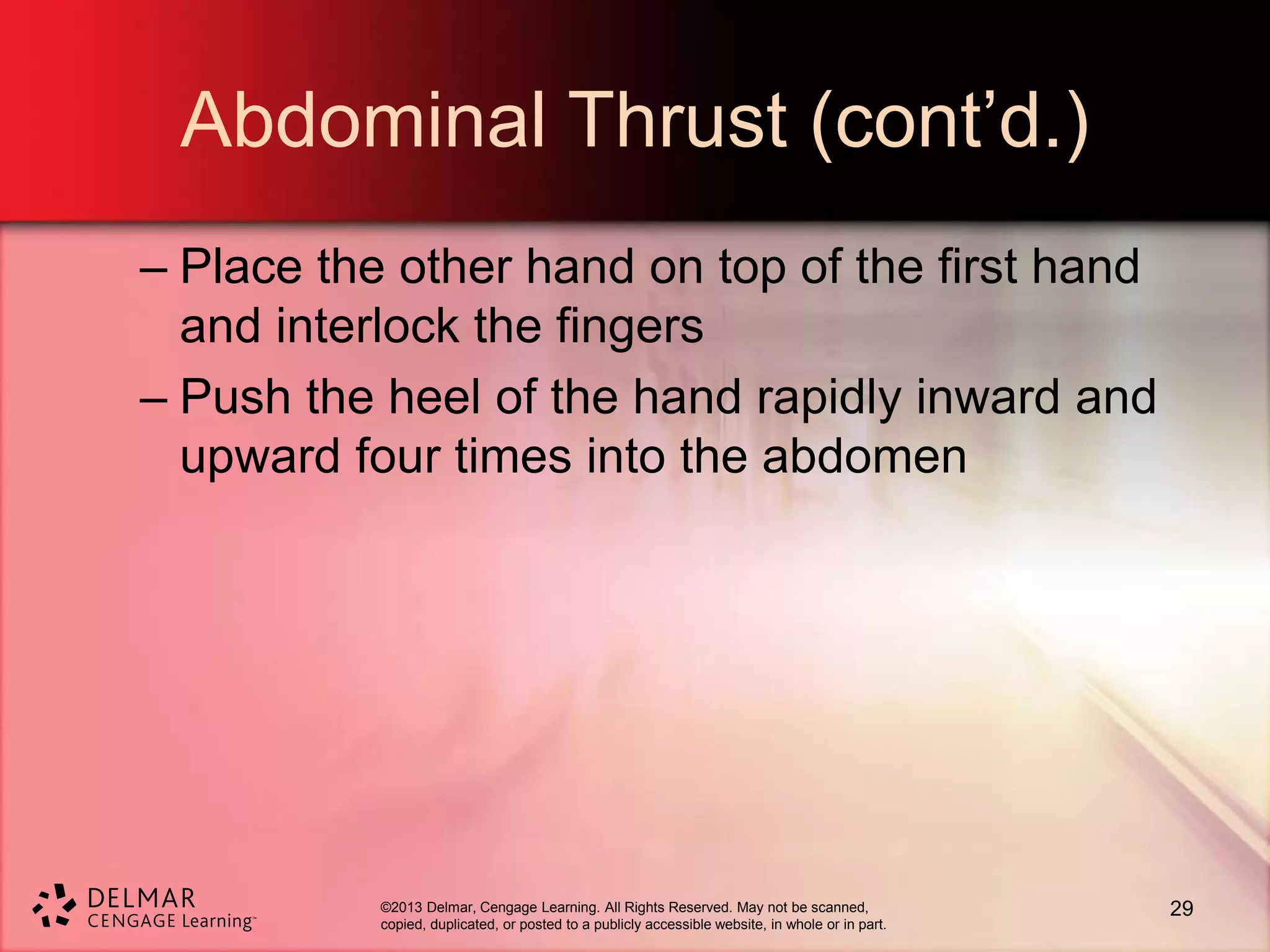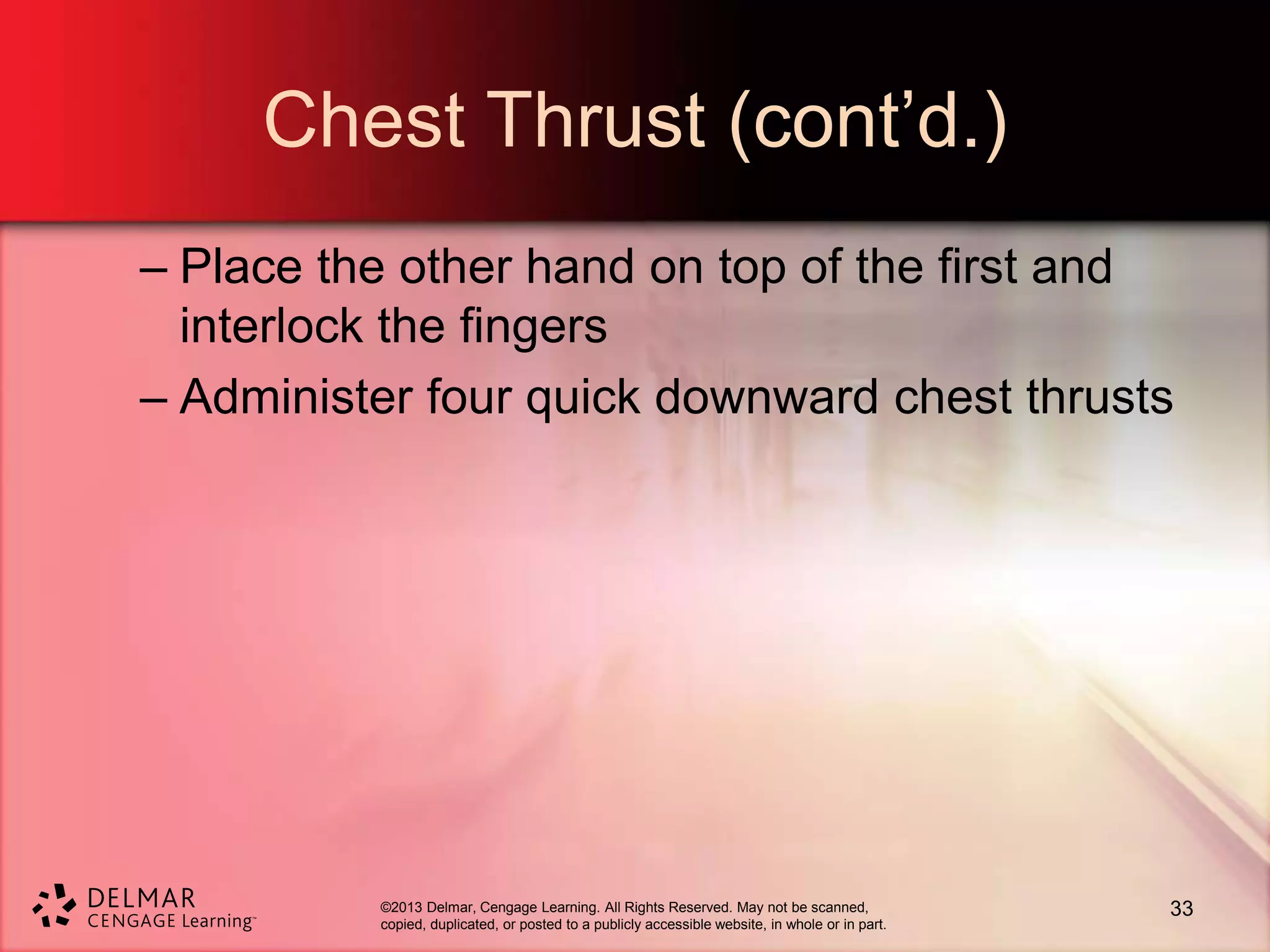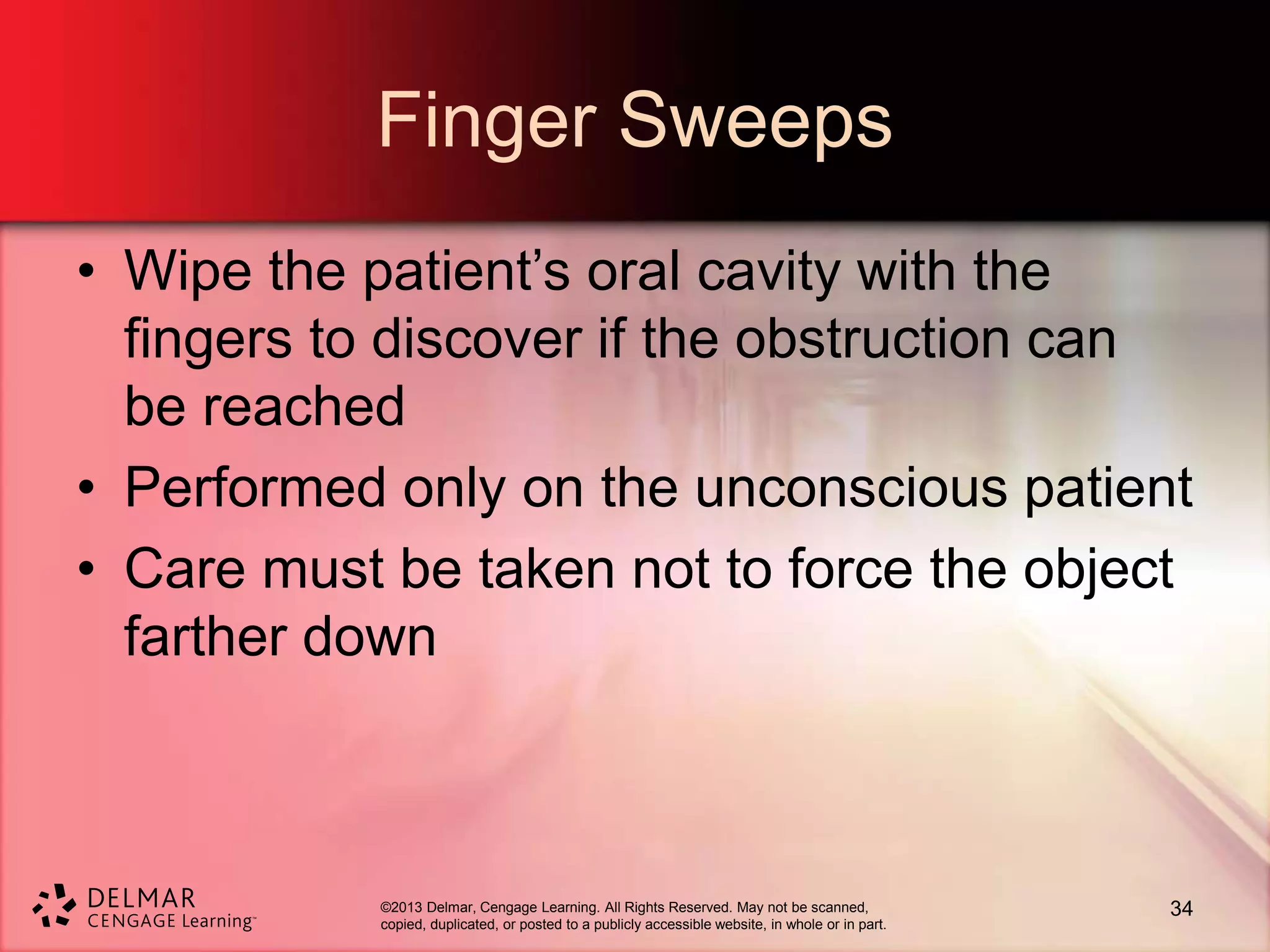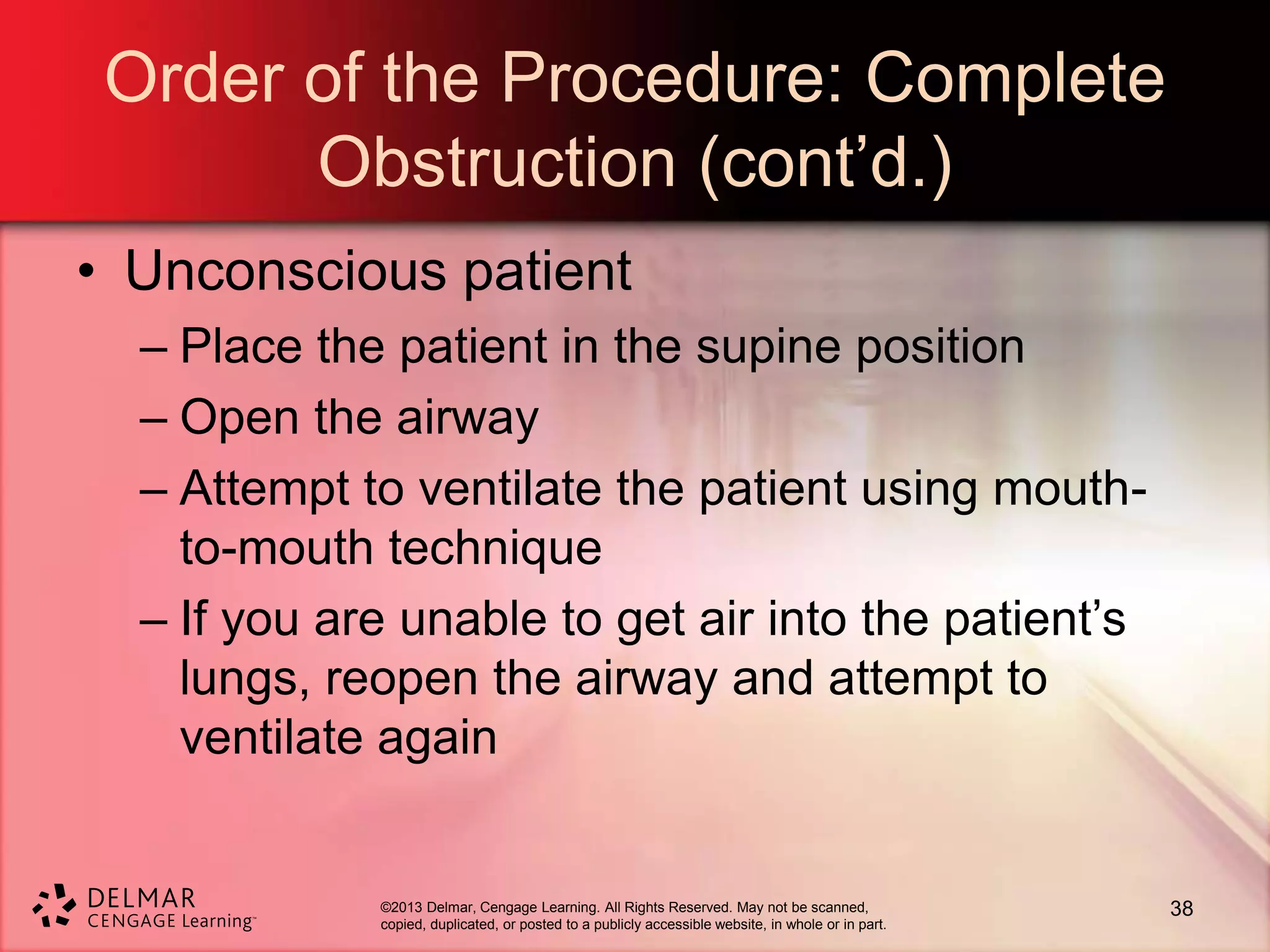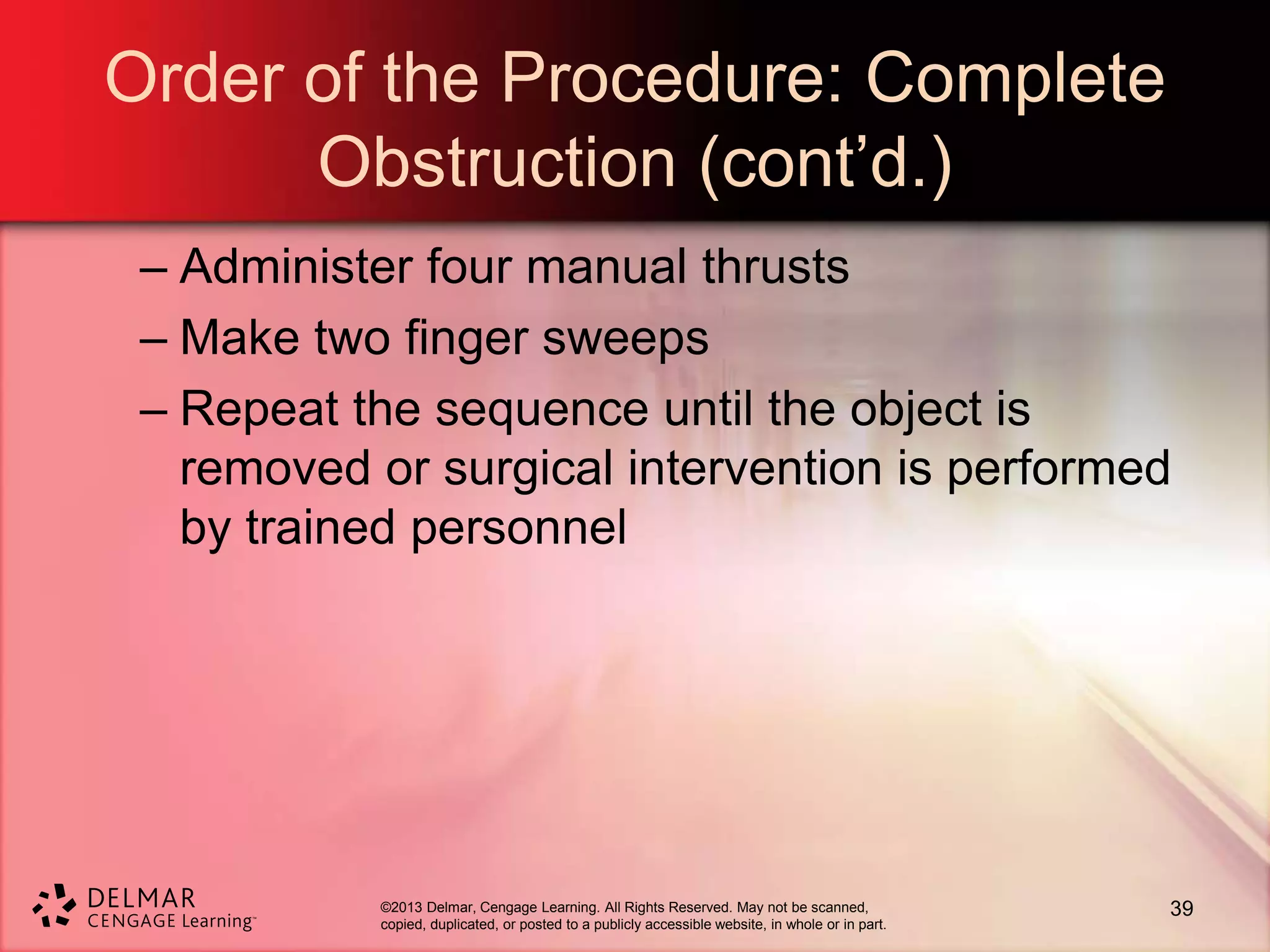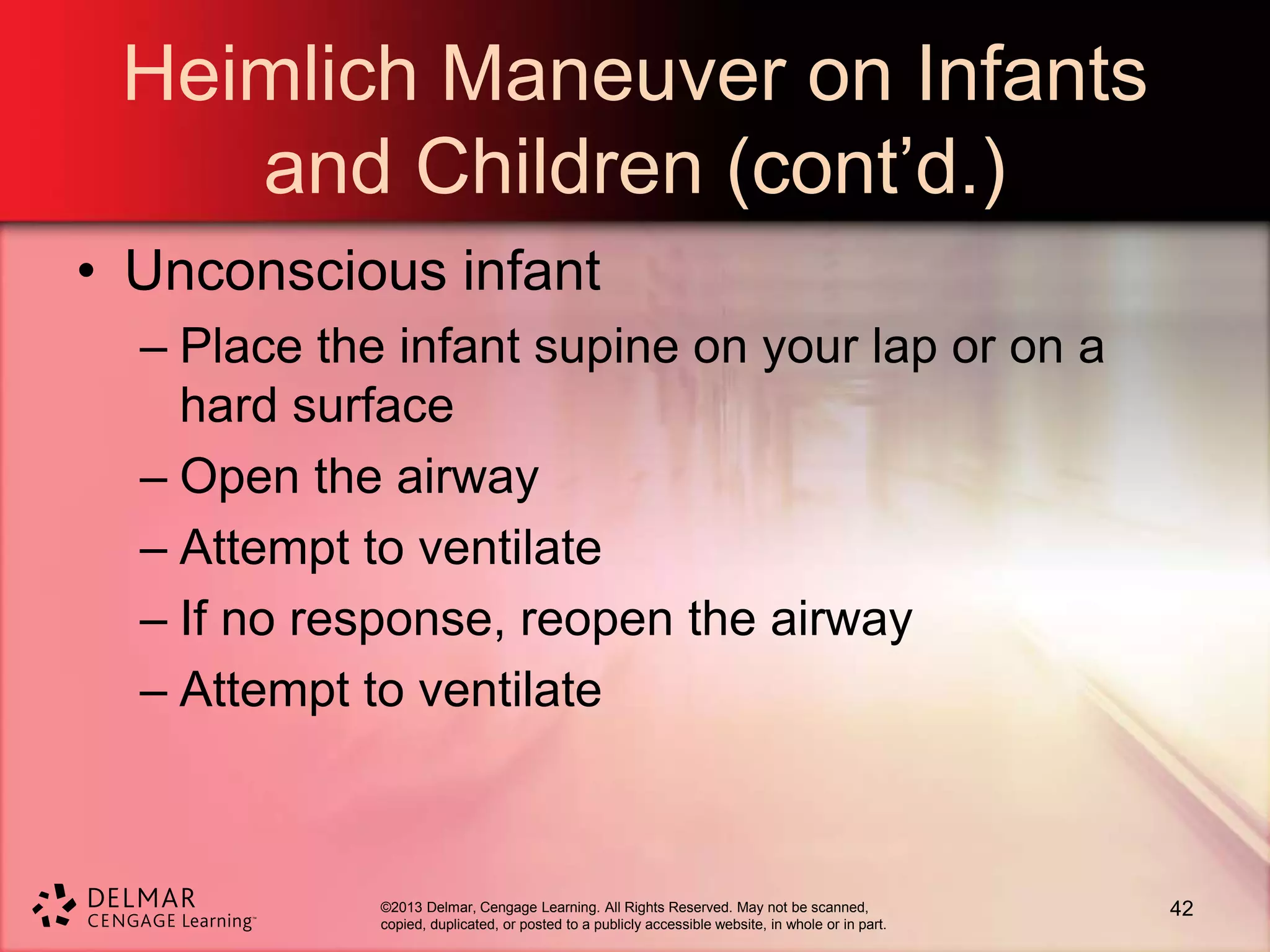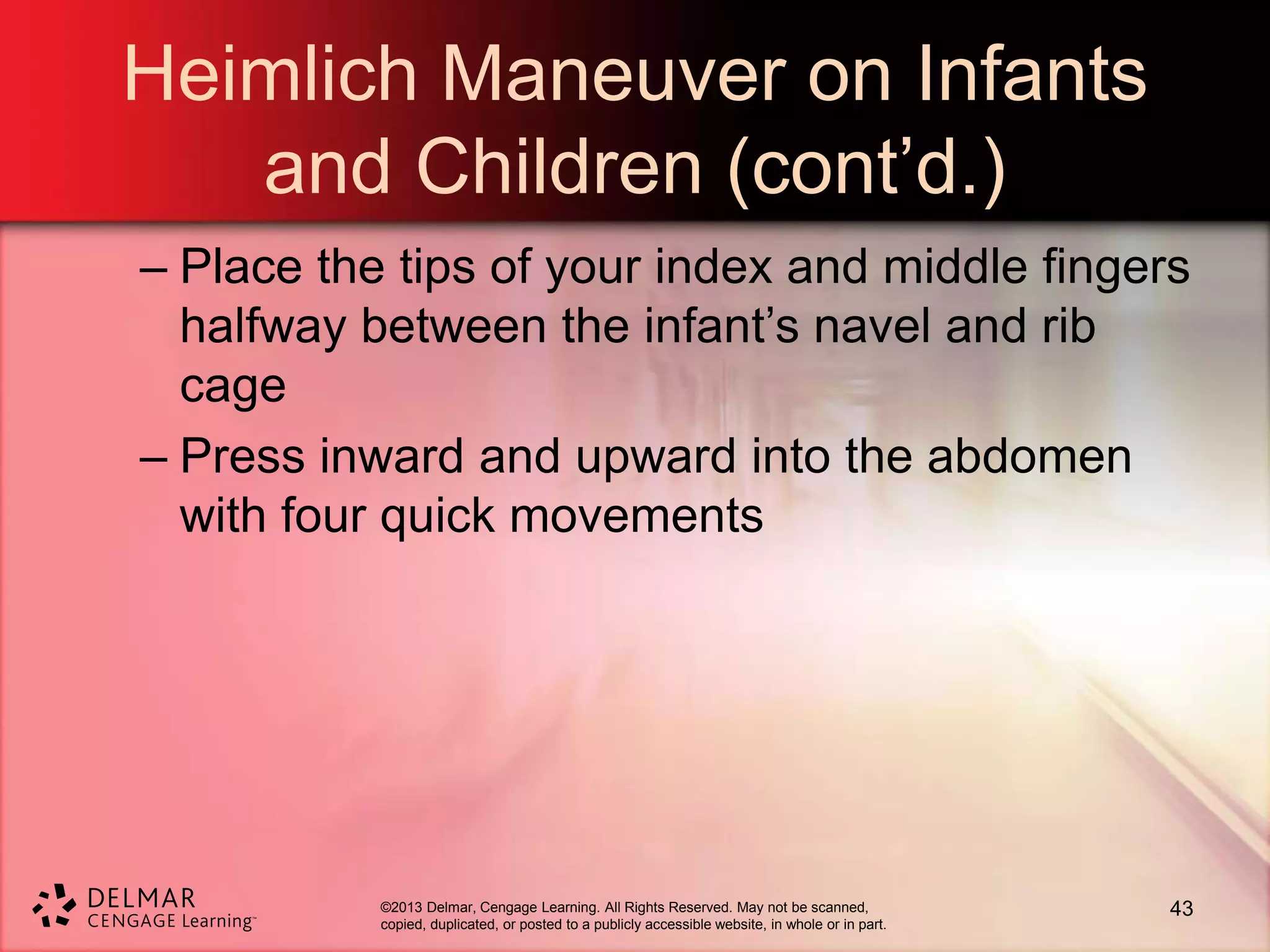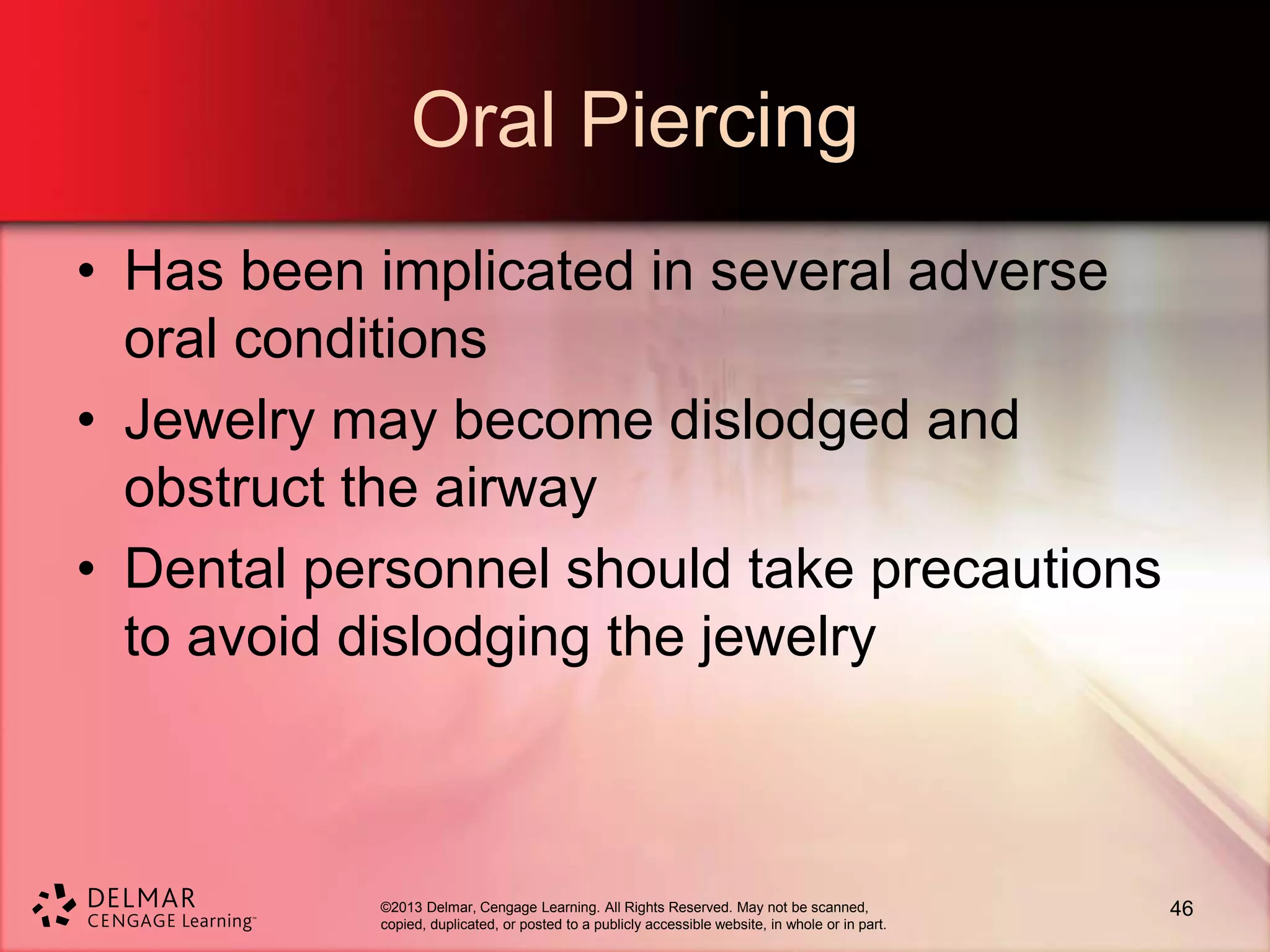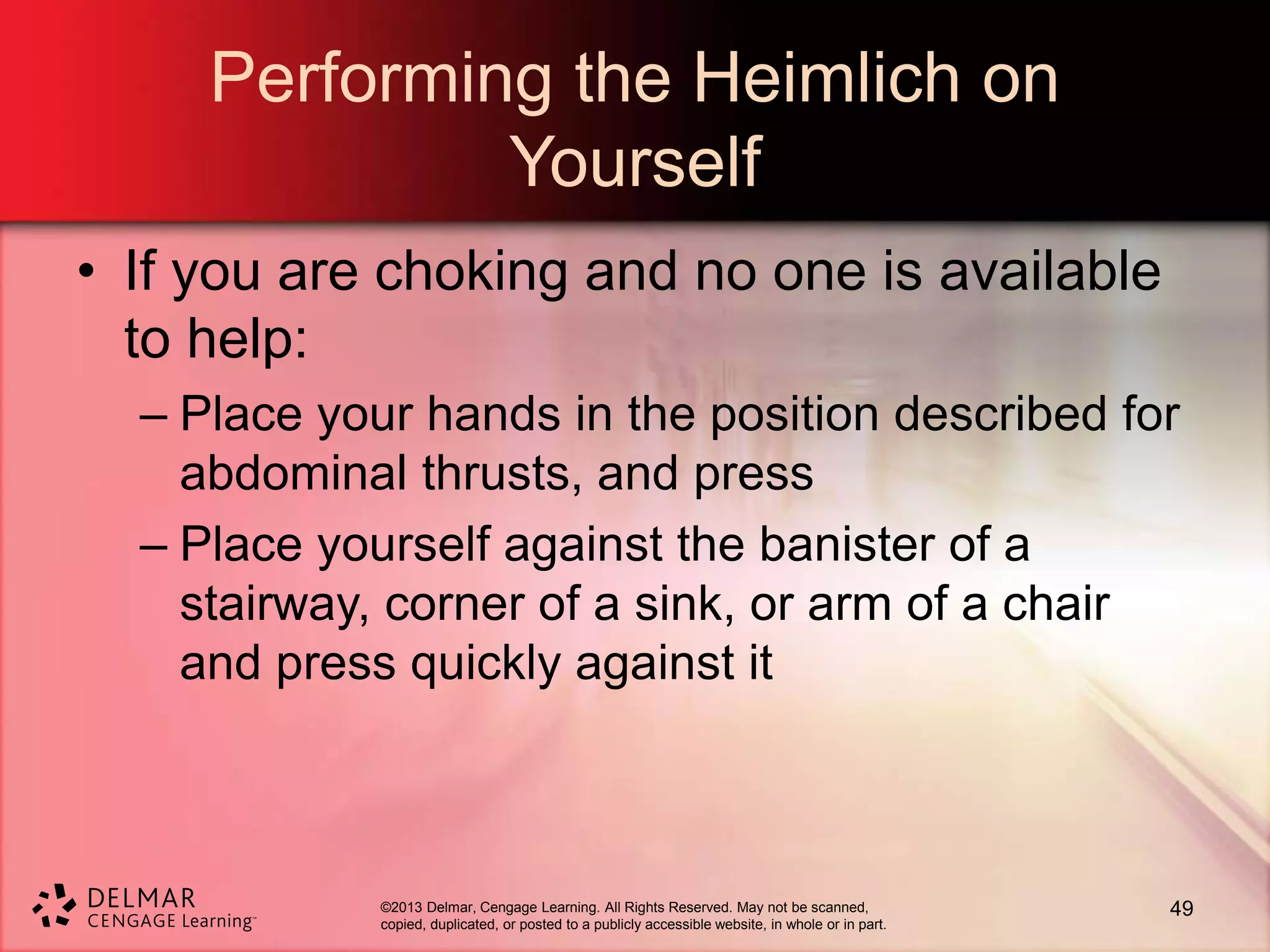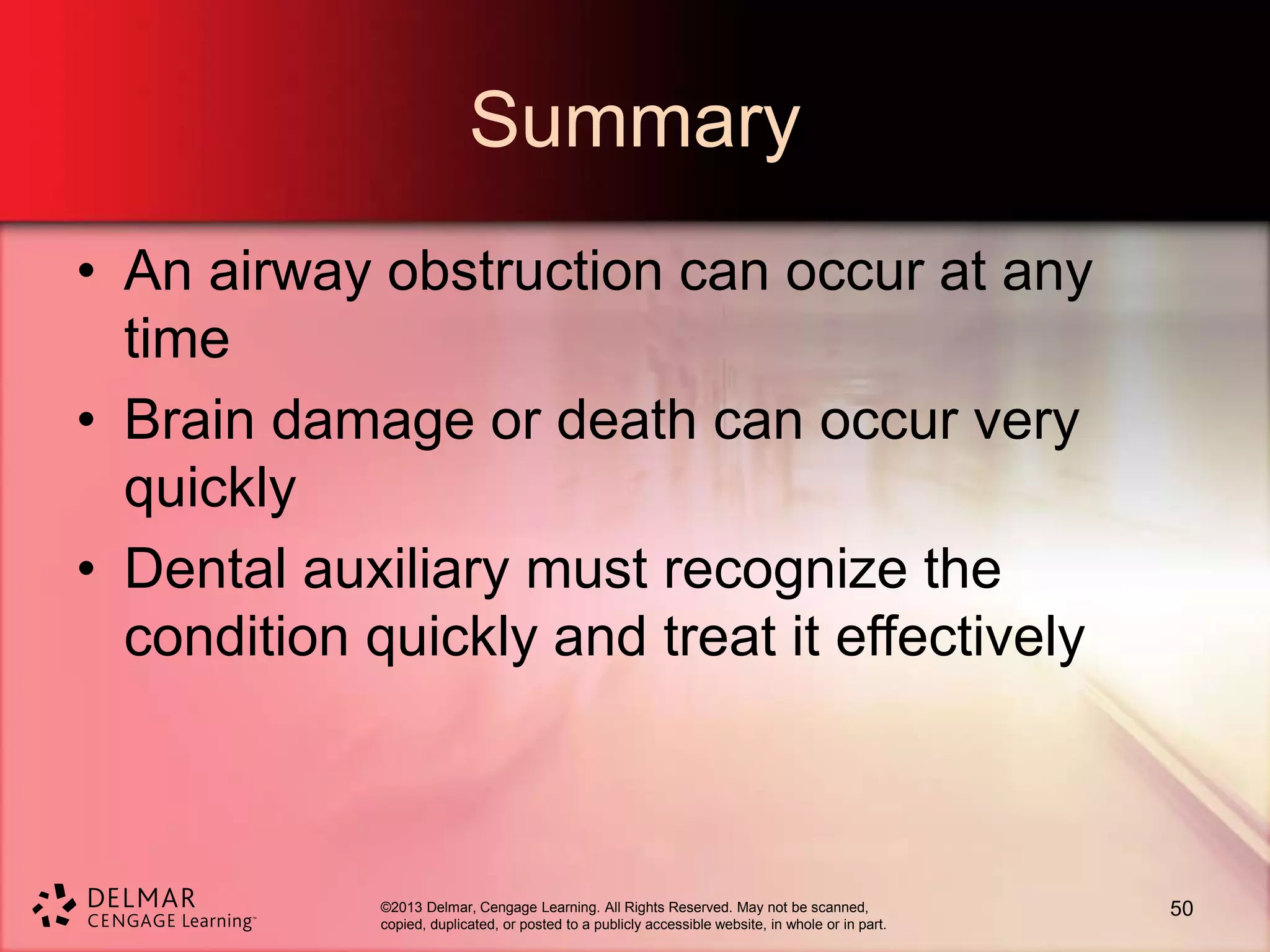This document discusses airway obstruction in the dental office setting. It begins by outlining the chapter objectives, which include explaining causes of airway obstruction, prevention techniques, airway anatomy, different types of obstructions, and demonstrating procedures like the Heimlich maneuver. The document then discusses dental hazards that can cause obstructions and the anatomy of the airway. It outlines the different types of partial and complete obstructions and techniques for treating obstructions, including abdominal thrusts, chest thrusts, and finger sweeps.










